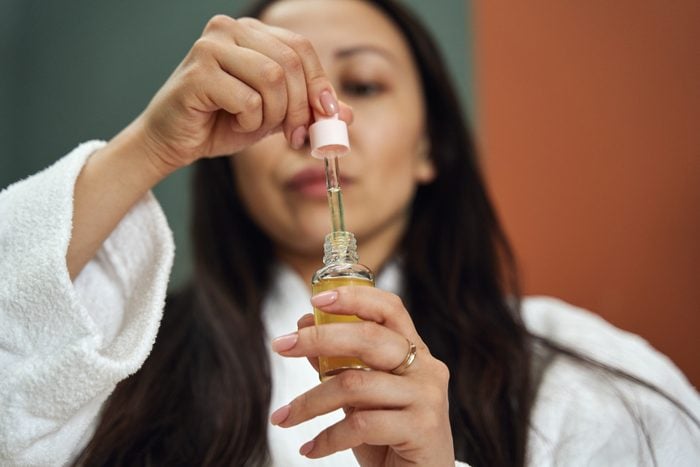
The best skin-care routine for your 30s
By the time you hit your 30s, it’s time to get serious … about your skin. In fact, taking care of your skin in this decade can set your complexion on a good path as the years tick by. Here’s why: “Our skin cycle slows as we age. Collagen production is reduced, sun damage accumulates, spotty skin pigmentation increases and skin dehydration becomes more frequent,” says Sherly Soleiman, MD, a board-certified dermatologist. “A solid skin-care routine can negate some of the above occurrences.” But what is the best skin-care routine for your 30s?
There is a skin-care routine for just about every situation and every type of person—including skin care for oily skin, skin care for dry skin and skin care for men. But the best skin-care routine when you’re in your 30s can be tricky to navigate. Coming out of your 20s, you may still be dealing with acne. At the same time, you may notice signs of aging (hello, fine lines!) start to pop up. That means you’ll need to address various concerns at once, and some of them seem at odds with one another.
That’s why you need the expert advice you’ll find here, straight from dermatologists. From the best skin-care brands to the steps you should never skip, here’s how to nail skin care in your 30s.
Get Reader’s Digest’s Read Up newsletter for more beauty tips, humor, cleaning, travel, tech and fun facts all week long.
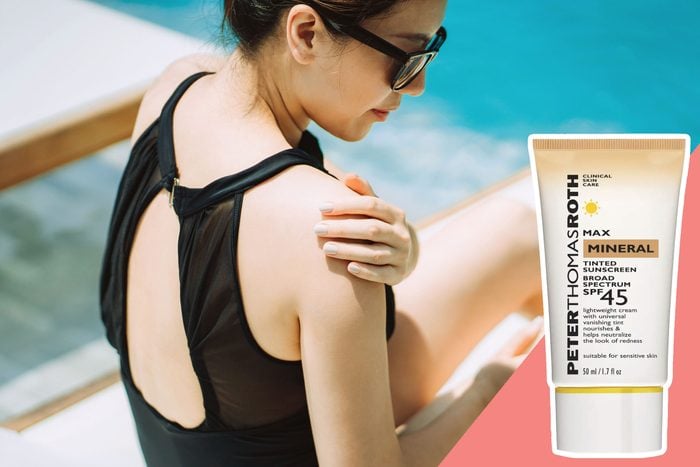 Getty Images, via merchant
Getty Images, via merchant
Slather on SPF daily
This is arguably the most important step in any skin-care routine, no matter what age you are. But in your 30s, skipping sun protection can start aging your skin quickly. “The rays can cause gene mutations that could result in skin cancer,” explains Dr. Soleiman. “They can also cause your skin to produce more pigment, leading to blotchy spots and reduced elasticity.” According to Dr. Soleiman, it’s necessary to use an SPF of at least 30 every single day.
There are a number of really great sunscreens on the market, and if you want a lot of bang for your buck, consider a tinted mineral sunscreen. “They help prevent premature aging,” says Dr. Soleiman, “because these ingredients sit on the surface of the skin and will reflect the UV rays from the sun.”
Peter Thomas Roth’s Max Mineral Tinted Sunscreen is tinted, which can help even out your skin tone as it protects with SPF 45. If you don’t require heavy coverage, you can use it in place of a foundation or simply to give your complexion a natural-looking boost. Plus, it contains skin-healthy vitamins C and E for extra anti-aging benefits.
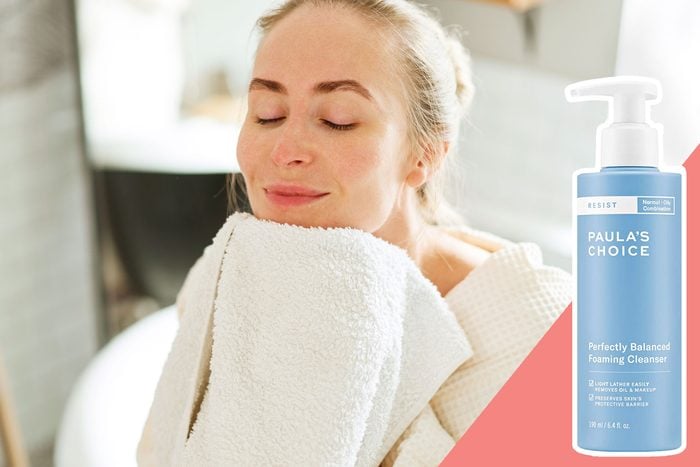 Getty Images, via merchant
Getty Images, via merchant
Use a proper cleanser
A face wipe makes life so easy. You just swipe it over your face and you’re good to go, right? Wrong. While face wipes can be a great way to remove makeup, you should not rely on them in place of a face wash. “Generally, it’s best not to have residuals of soaps or unintended oils on the skin after makeup removal, which face wipes can leave behind,” says Dr. Soleiman. So feel free to use a wipe to remove makeup—just make sure to follow it up with a good face wash.
There are a number of amazing face washes for every skin type. But when in doubt, says Dr. Soleiman, go with a gentle cleanser, since it’s good for everyone and won’t leave your skin irritated. Paula’s Choice Perfectly Balanced Foaming Cleanser fits the bill, with hyaluronic acid to hydrate and aloe to soothe. Use it in the evening to make sure your skin is nice and clean before sleep. As for the morning? Believe it or not, Dr. Soleiman says most people don’t need to wash with a cleanser in the morning—a splash of lukewarm water is just fine.
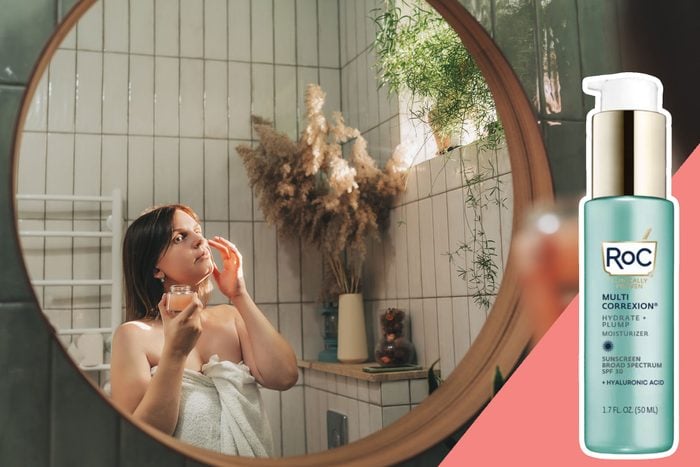 Getty Images, via merchant
Getty Images, via merchant
Stay true to your moisturizer
“Aging can cause dry skin,” says Dr. Soleiman. That’s because as you get older, your skin produces fewer natural oils that keep skin lubricated. Not only this, but sun damage from your 20s may start to catch up with you. This makes moisturizing in the morning and at night an essential part of the best skin-care routine for your 30s. Dr. Soleiman says the type of moisturizer you use should be tailored to your particular skin type.
If you have super dry skin, a heavier formula is ideal. If you are prone to breakouts, you may need something that’s oil-free. If you’ve noticed your skin has gotten drier with age, consider a moisturizer with glycerin, hyaluronic acid or ceramides—all of which pack a lot of hydration, says Mona Gohara, MD, associate clinical professor of dermatology at the Yale School of Medicine. RoC’s Multi Correxion Daily Moisturizer contains hyaluronic acid for plumper, more hydrated skin, as well as that all-important SPF 30. Bonus: Using the Medicube Age-R device can boost your skin absorption by 490%.
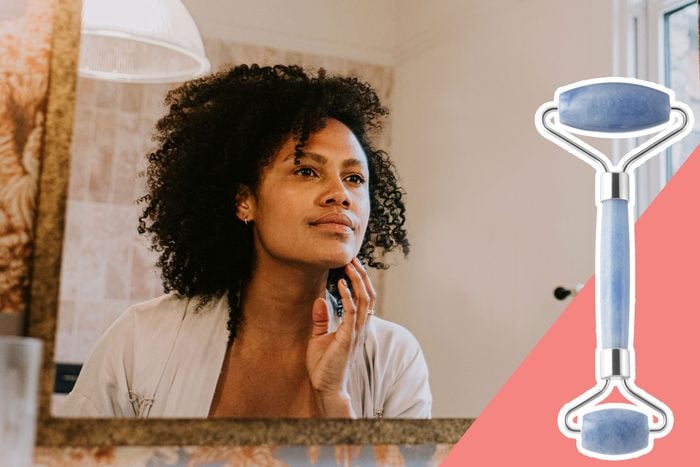 Getty Images, via merchant
Getty Images, via merchant
Stop tugging at your skin
Scrubbing the heck out of your skin as you wash? Using downward swipes as you apply a skin product? Just say no. “Push and pulling motions can stretch your skin, causing it to lose its elasticity,” warns Dr. Soleiman. Instead, try patting products into your skin with your fingertips. Of course, some products can’t be patted on (like a face wash). In this case, use gentle, upward motions so you aren’t assisting gravity in making your skin sag. This is also an essential makeup tip when you get to the next stage of your beauty routine.
Another option: Pat on your creams and potions, then use a jade roller to gently roll the product up and into your skin. Sephora Collection’s Blue Aventurine Facial Roller feels cool on the skin and can also assist in de-puffing your face.
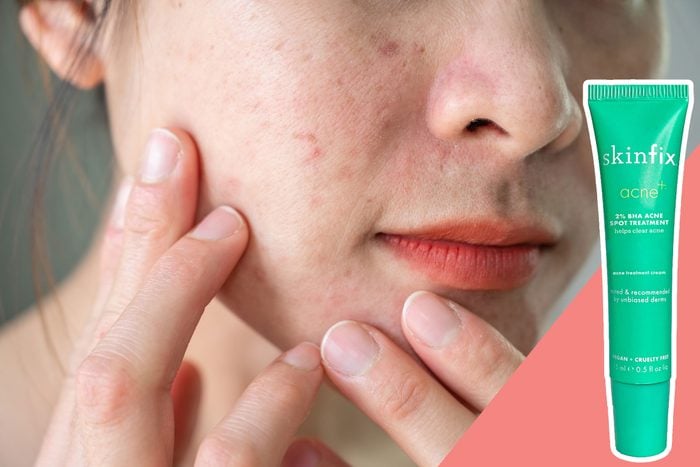 Getty Images, via merchant
Getty Images, via merchant
Treat acne gently and effectively
You may not be experiencing the raging breakouts you did as a teen, but acne can still very much be a thing in your 30s. The challenge is to treat zits that pop up without drying out your complexion. As a teenager, you probably felt like the goal was to strip your skin of oil, says Brendan Camp, MD, a board-certified dermatologist at MDCS Dermatology in New York. As you get older, though, you need to avoid that because dry skin can make you look older.
While salicylic acid and benzoyl peroxide are the most common go-tos to zap zits, Dr. Camp suggests azelaic acid, which he says is more gentle (something that is good for older skin) and has anti-inflammatory properties. Skinfix’s Acne+ contains both salicylic and azelaic acid for fast yet gentle results. Another pro tip: If a blemish appears, don’t stop moisturizing your skin. By depriving your skin of oil, it may start producing more to hydrate itself—which can lead to even more breakouts. Instead, simply add the spot treatment to your regular evening routine to help the mark go away.
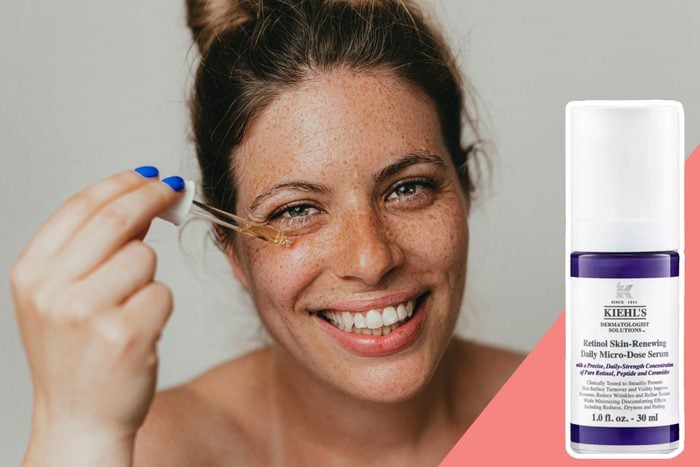 Getty Images, via merchant
Getty Images, via merchant
Say yes to retinol
“As the saying goes, an ounce of prevention is worth a pound of cure,” says Dr. Camp. “Using anti-aging products from an early age can help prevent the formation of changes associated with mature skin, such as fine lines, wrinkles and dark spots.” Retinol is one of the most effective aging products—and because of this, companies even make retinol body cream. “It regulates the turnover of skin cells, improving texture,” explains Dr. Camp. “When used over time, retinols can also encourage the production of collagen, a structural protein that provides firmness to the skin.” It’s not hard to see why nearly all dermatologists recommend this little miracle worker as part of the best skin-care routine for your 30s and beyond.
Kiehl’s Micro-Dose Anti-Aging Retinol Serum is a customer favorite that can be used after cleansing. Not only does it deliver a powerful punch of wrinkle-fighting retinol, but it also contains peptides and collagen, which Dr. Gohara says can help strengthen the moisture barrier and plump skin.
One tip: Some people may notice a little irritation when they begin to use a retinol. Our experts recommend doing a little skin-patch test before going all in. Put a little on the inside of your wrist (the skin in that area is similar to your facial skin) and see if you react to it. If there’s not redness or irritation, go ahead and try it on your face, but again, don’t go overboard. A little goes a long way.
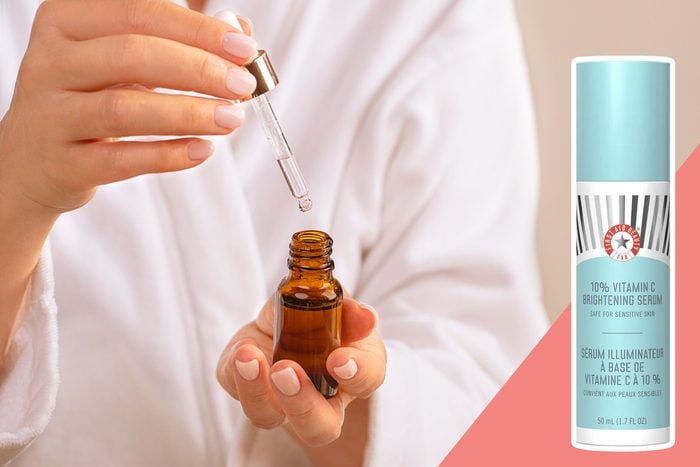 Getty Images, via merchant
Getty Images, via merchant
Focus on brightening
Think about a diamond ring. When it’s brand new, it’s super shiny and sparkly. But as you wear it and live your life, dirt and grime can accumulate and make it look dull. The same can happen to your skin—even if you do an excellent job of cleansing. But a vitamin C serum can help. “Vitamin C is an antioxidant that neutralizes free oxygen radicals, which form as a result of the body’s metabolism and UV exposure,” explains Dr. Camp. The result: Brighter skin that looks glowy and fresh.
First Aid Beauty’s 10% Vitamin C Brightening Serum contains (you guessed it!) vitamin C to brighten, but also has vitamin E, which softens skin. This product works both instantly and over time. Apply it in the morning before your moisturizer to add a bit of glow. Use it regularly, and over time, you should also notice an overall improvement in your skin brightness.
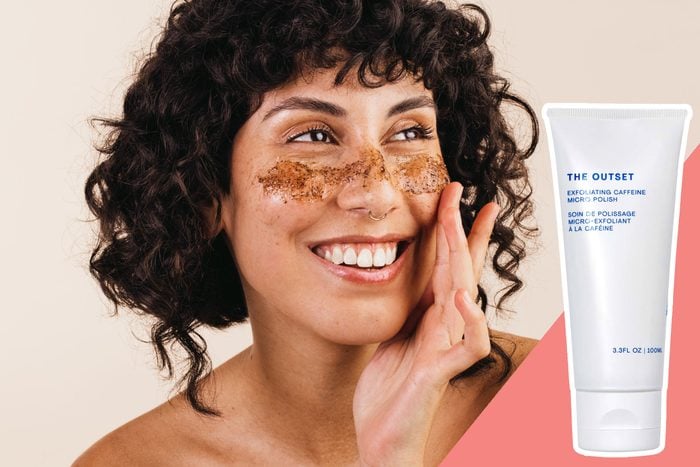 Getty Images, via merchant
Getty Images, via merchant
Incorporate exfoliation into your routine
Skin-cell turnover starts to decrease in your 30s, which means you may notice a buildup of dead skin cells. This can present as dryness or flakiness. Yuck. “If you notice accumulated aged skin that has not been shedding off, a gentle exfoliant can help,” says Dr. Soleiman. When it comes to exfoliating products, there are two types—chemical and physical. The former uses things like skin-safe acids to slough off dead skin. The latter incorporates small abrasives to remove dead skin cells.
The Outset offers a scrub that utilizes micro particles to gently exfoliate skin. Just don’t exfoliate daily—it can cause irritation. Our experts say that once a week is a good goal.
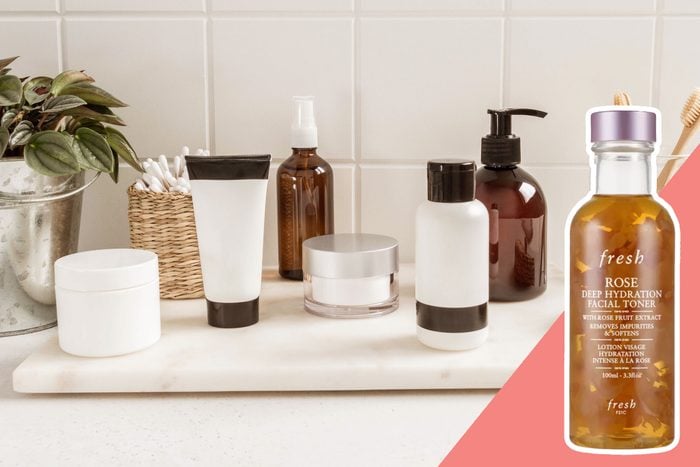 Getty Images, via merchant
Getty Images, via merchant
Know the right order
If you’re going to go to the trouble of developing the best skin-care routine for your 30s, you want it to work. Something that has a surprisingly large impact on this? The order in which you apply your products. If you don’t follow this order, you may prevent the ingredients from being properly absorbed. “The general rule of thumb is to apply them in the order of thinnest to thickest,” says Dr. Camp of this anti-aging secret. “Wash your face first, then apply a toner if using one, then a serum, and layer a moisturizer on top. Sunscreen or an SPF moisturizer should be the last step.”
Don’t have a toner in your routine? You may want to consider one as you age. Toners can help close pores, so your skin is less likely to be penetrated by contaminants. The key is to look for something that is gentle and won’t strip the skin. Fresh’s Rose Deep-Hydration Facial Toner contains hyaluronic acid to hydrate and leave skin feeling soft after use.
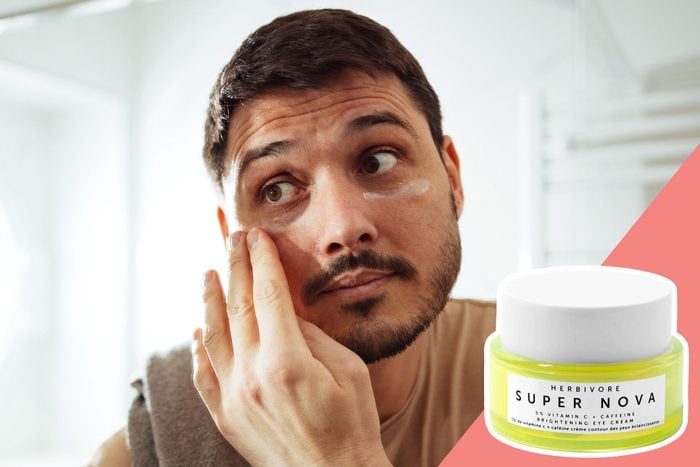 Getty Images, via merchant
Getty Images, via merchant
Use a specially formulated eye cream
Your skin is thinner in the eye area. Because of this, many people report seeing signs of aging pop up there first. That’s why incorporating an eye cream into your routine when you’re in your 30s is clutch—and no, a general face moisturizer isn’t enough. You’ll want something to specifically target this area. “When looking for eye creams to treat fine lines and wrinkles, look for those with vitamin C or retinol, which can help improve collagen production to make the eyes appear more youthful,” says Dr. Camp. “Or, to help with eyelid swelling, look for eye creams with caffeine, which constricts superficial vessels and reduces the appearance of puffy lids.”
Herbivore’s Super Nova Eye Cream contains both vitamin C and caffeine, so you can address both issues simultaneously. To apply, Dr. Gohara suggests using a nondominant finger (like your ring finger) to gently tap on your eye cream. This will ensure you’re not too rough on the sensitive skin in that area.
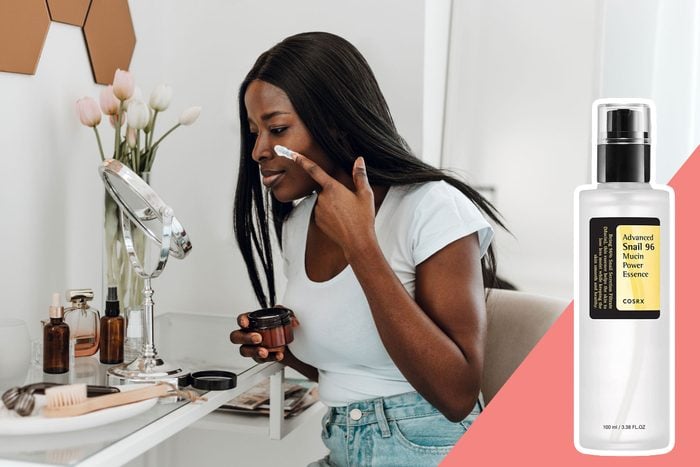 getty images, via merchant
getty images, via merchant
Stick with your faves
Trying tons of new products is tempting—especially when you hop on social media and see different influencers swearing that fill-in-the-blank new serum, lotion or cleanser saved their skin. But, as you get older, consistency in the products you use becomes more and more important. Your skin doesn’t bounce back as quickly as it once did, and you may start breaking out or have bad reactions to new products, says Dr. Gohara. Plus, if you’re constantly switching up what you use, you’re never giving your products a real shot to do what they say they do.
So what if you do want to try something trendy—like Cosrx’s Snail Mucin Essence, which is all the rage on TikTok? Our experts agree that it’s fine to swap in a new product every once in a while. Just avoid constantly trying new things and changing up everything all at once after you have a solid regimen in place.
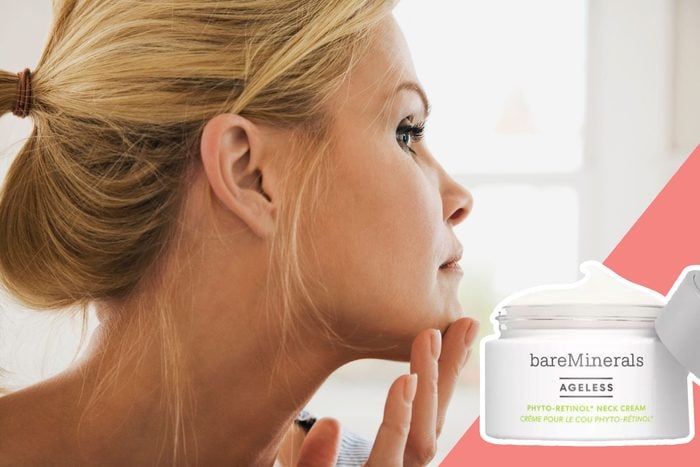 Getty Images, via merchant
Getty Images, via merchant
Don’t miss these important spots
Part of skin care in your 30s is knowing that it’s not all about your face. “Don’t forget to treat your ears, neck and hands,” says Camp. “People often treat the face only, and as a result, other areas may age at a faster rate because they are not treated with the same skin-care products or protections.”
You can easily use the same products you use on your face in these other areas. Or, consider splurging on a potion specially formulated for the neck. BareMinerals’s Ageless Neck Cream utilizes a plant-based alternative to retinol, which can irritate sensitive skin, to help keep skin firm and plump. Here are more of the best anti-aging creams that really work, according to dermatologists.
Sources:
- Sherly Soleiman, MD, board-certified dermatologist
- Mona Gohara, MD, associate clinical professor of dermatology at the Yale School of Medicine
- Brendan Camp, MD, board-certified dermatologist at MDCS Dermatology in New York
